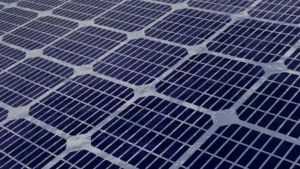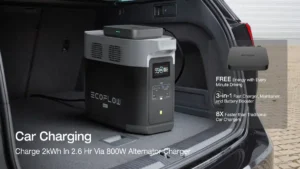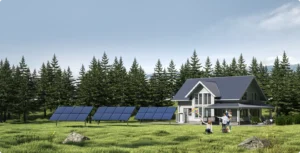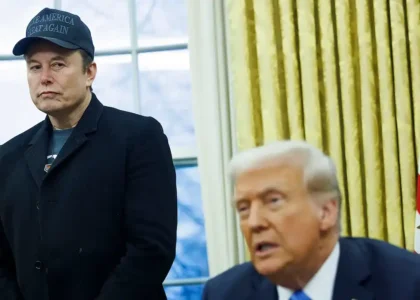A federal lawsuit filed by a coalition of 17 states and the District of Columbia against the Trump administration challenges an executive order halting all approvals, permits and loans for wind energy projects to be approved. The legal battle reflects the ongoing clash between state-promoted clean energy and federal policies that continue to back fossil fuels.
The Executive Order and Immediate Reaction
On January 20, 2025, President Trump orders to put a moratorium on new leslies and permits for on-shore and off-shore wind project siting on federal lands / waters. The administration says that it is putting a pause on the push thanks to such environmental concerns, economic cost and unreliability of wind energy. But critics say the order flies in the face of a decades-old trend away from fossil fuels and marks a betrayal of millions of dollars in federal renewable energy investments
Among the recent actions: The order has paused a large project, like Equinor’s $5 billion Empire Wind which was about 30 percent built when they hit the brakes. Such project uncertainty is viewed with growing concern by investors, developers and state officials.
Why Did the Trump Administration Ban Wind Energy?
According to the administration, the decision to halt wind energy development stems from multiple concerns:
Environmental and Wildlife Impacts: The White House cited data suggesting that offshore wind projects could harm marine ecosystems and migratory bird paths. This concern, while not new, has been widely debated and contradicted by several environmental assessments.
Economic Viability: Administration officials questioned the long-term economic efficiency of wind power, claiming it depends too heavily on subsidies and creates unreliable job growth compared to fossil fuel sectors.
Grid Reliability and National Security: The Trump administration has emphasized national security risks tied to renewable energy dependence. Officials pointed to studies suggesting that the intermittency of wind power could compromise grid stability and increase energy costs.
Political Philosophy: The order also reflects the administration’s broader energy strategy, which prioritizes “energy dominance” through expanded oil, gas, and coal production. Wind and solar are seen as competitors to those traditional sectors, often portrayed as less reliable or cost-effective.
Critics argue these reasons are politically motivated and inconsistent with data from the Department of Energy and independent studies, which show falling wind energy costs and significant growth in the sector’s job creation.
States’ Legal Challenge
The lawsuit, filed in federal court in Massachusetts, argues that the executive order is “arbitrary and capricious,” violating the Administrative Procedure Act. The plaintiffs contend that the administration’s actions threaten billions in investments, thousands of jobs, and the states’ abilities to meet their clean energy and climate goals.
New York Attorney General Letitia James, leading the coalition, emphasized the potential economic and environmental repercussions, stating that the order disrupts clean energy transitions and jeopardizes public health. The states involved have already invested heavily in wind infrastructure and argue that the executive order contradicts bipartisan energy policies and the administration’s own declarations on energy expansion.
Broader Implications for Renewable Energy
The halt on wind energy projects has ripple effects across the renewable energy sector, including solar energy. The executive order’s emphasis on fossil fuels and the suspension of clean energy initiatives creates an environment of uncertainty that can deter investment and slow the adoption of renewable technologies.
For instance, the data center industry, which relies heavily on renewable energy to meet its substantial power needs, has expressed concern that the administration’s opposition to renewable energy could hinder the country’s competitive edge in the global artificial intelligence (AI) race. Data centers require vast and reliable power to operate and train AI models, and restrictions on renewable development could lead to increased costs and greater reliance on polluting energy sources.
Moreover, the executive order has led to the suspension of funding for rooftop solar, energy efficiency, and other clean energy programs, prompting additional legal challenges from states seeking to restore these critical investments.
The judicial battle between Trump’s administration and American states on the prohibition of wind energy shows the complex dynamics surrounding state-led clean energy policy and federal regulations. The court’s ruling will have a far-reaching consequence not only for the wind energy sector but also for the renewable energy sector as a whole, including solar power. With the nation grappling with climate change and energy sustainability, today’s decisions will shape the future of America’s energy infrastructure tomorrow.








